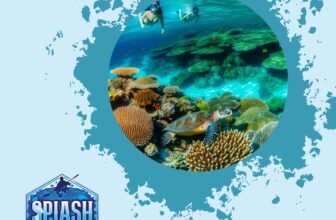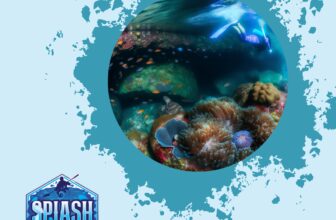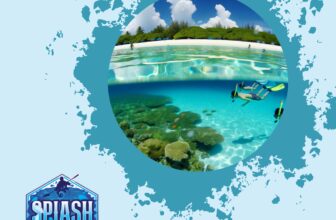
Plastic waste in the oceans has snowballed into a critical environmental concern. Marine microplastics, defined as tiny plastic particles less than five millimeters, pose significant threats to marine life and ecosystems. It's essential to understand and implement solutions. In this guide, you'll discover practical solutions to tackle marine microplastics and how divers can contribute to this crucial effort.
Introduction
Marine microplastic pollution is a growing concern that's catching more and more attention worldwide. These tiny plastic particles, often smaller than a grain of rice, end up in our oceans through various sources like cosmetic products, clothing fibers, and the breakdown of larger plastic debris. Although small in size, their impact is anything but minimal.
Addressing microplastics is crucial for maintaining a healthy ocean ecosystem. These particles can harm marine life, disrupt food chains, and even make their way into the human diet. Fish and other sea creatures often mistake microplastics for food, which can lead to ingestion of toxins. As these particles accumulate in the marine food web, they eventually find their way onto our plates.
Divers are uniquely positioned to make a significant impact in this battle against marine microplastics. With their close interactions with underwater environments, divers can help monitor pollution levels, initiate cleanups, and advocate for more sustainable practices. Their firsthand experiences and observations can drive meaningful change both locally and globally. So, whether you're a seasoned diver or just starting out, your contributions can pave the way for healthier oceans and a cleaner planet. Dive in and make a difference.
Understanding Marine Microplastic Pollution
Dive into the world of marine microplastic pollution—a plague that starts small but packs a big punch. Microplastics are tiny plastic particles, typically less than five millimeters in size. These sneaky invaders originate from a variety of sources including the breakdown of larger plastic debris, synthetic clothing fibers, microbeads in personal care products, and even industrial processes.
Why does this matter? For starters, microplastics wreak havoc on marine ecosystems. They’re ingested by a range of ocean creatures from microscopic plankton to larger fish, which not only disrupts their digestion and reproductive systems but also threatens entire food chains. What’s more, these particles can act as sponges for other harmful chemicals, making them toxic time bombs within the ocean environment.
The impact isn’t just confined to underwater life; it stretches to our dinner tables. As smaller marine organisms consume microplastics, these materials bioaccumulate up the food chain, potentially reaching human consumers. This raises legitimate health concerns about the tiny plastics on your plate and what they might be doing to your insides.
Examples of microplastic hotspots are spread across the globe. Studies have shown significant concentrations in regions like the Great Pacific Garbage Patch, the Mediterranean Sea, and even remote Arctic waters. This widespread contamination signals that no part of our ocean is immune.
Understanding the scope and origins of marine microplastics is the first step towards fighting this pervasive problem. As divers, knowing what we’re up against helps us better protect the oceans we love to explore.
Innovative Marine Microplastic Solutions
The fight against marine microplastics is multifaceted and requires innovation on various fronts. Let's dive into some of the most promising solutions currently being developed and implemented around the globe.
Technological Advances
In the realm of technology, engineers, scientists, and innovators are making significant leaps. One key area is wastewater treatment, where advanced filtration systems are being developed to capture microplastics before they ever reach the ocean. These systems utilize various techniques, such as membrane filters and biological treatments, to trap even the tiniest plastic particles. Cities and industries investing in these technologies can significantly reduce the amount of microplastics entering our waterways.
Another exciting development is the creation of biodegradable plastics. Traditional plastics can take hundreds of years to degrade, but biodegradable alternatives are designed to break down more quickly and safely in the environment. Researchers are working on plastics made from natural materials like plant starch, which decompose in a matter of months to a few years, reducing the long-term impact on marine ecosystems.
Ocean Cleanup Initiatives
When it comes to direct action, large-scale ocean cleanup projects play an essential role. Organizations like The Ocean Cleanup and The SeaCleaners are leading the charge with innovative approaches. The Ocean Cleanup, for instance, employs floating barriers to concentrate and extract plastic debris from the ocean, aiming to remove half of the Great Pacific Garbage Patch within five years. These initiatives show promise not just in removing surface plastics but also in inspiring global awareness and action.
Additionally, new technologies are being introduced to assist in large-scale cleanups. One example is the "Seabin," a floating garbage can designed to collect floating plastic debris in marinas, ports, and yacht clubs. It can also capture some microplastics, making it a valuable tool for reducing pollution in local waterways.
Policy and Regulatory Solutions
Effective policy and regulation are crucial for a long-lasting solution to marine microplastics. Governments around the world are beginning to enforce stricter regulations on plastic production, usage, and disposal. Policies like plastic bag bans, single-use plastic restrictions, and extended producer responsibility schemes are gaining traction. These policies not only reduce the influx of new plastic into the environment but also encourage the development of more sustainable products and practices.
Examples of successful policies include the European Union's ban on certain single-use plastics and India's nationwide plastic bag ban. These measures have led to significant reductions in plastic waste and have set a precedent for other regions to follow.
By embracing and supporting these innovative solutions, we can make substantial progress in the battle against marine microplastics. As divers and ocean enthusiasts, staying informed and advocating for these advances amplifies our collective impact.
How Divers Contribute to Marine Conservation
Think of divers as the eyes and hands of the ocean conservation movement. Their unique vantage point allows them to monitor and document microplastic pollution firsthand. By using underwater cameras and logging their observations, divers can provide valuable data to scientists and environmental organizations. This helps paint a clearer picture of where microplastics are most concentrated and how they move through different marine ecosystems.
Divers also play a crucial role in cleanup efforts. Diver-led initiatives often focus on coastal areas and underwater environments where other cleanup methods fall short. Armed with mesh bags and gloves, divers can collect plastic debris that endangers marine life and habitats. These cleanups not only remove harmful materials from the ocean but also raise awareness about the severity of plastic pollution.
There are plenty of success stories showcasing the power of passionate divers. Take, for instance, the Project AWARE Foundation’s “Dive Against Debris” program, which mobilizes divers worldwide to participate in underwater cleanups. Through such programs, divers have removed thousands of pounds of trash from the oceans and contributed to global databases documenting marine debris. These databases are vital for shaping future policies and strategies to combat marine pollution.
As more divers get involved, the collective impact grows exponentially. By diving with a purpose, they become both protectors and advocates of the underwater world, proving that even small, individual actions can lead to significant, positive change.
Practical Steps Divers Can Take
Organizing and Participating in Ocean Cleanup Initiatives
Getting involved in ocean cleanup efforts is a straightforward way for divers to contribute to the battle against marine microplastics. The first step is to connect with existing local or global initiatives, such as Project AWARE or The Ocean Cleanup, that often host organized diving events. If none exist in your area, consider mobilizing your own group. Gather a handful of like-minded divers and coordinate with local dive centers to plan beach and underwater cleanups. It’s a great way to build community while making a tangible impact.
Best Practices for Minimizing Impact
As a diver, your actions in and out of the water can significantly influence marine health. Always follow eco-friendly diving practices such as not touching or disturbing marine life and avoiding contact with the seabed. Use reef-safe sunscreen and eco-friendly gear. Ensure that your own waste doesn't contribute to pollution; pack out all trash and dispose of it correctly onshore. These small steps can collectively make a significant difference.
Spreading Awareness and Educating Others
One of the most powerful tools divers have is the ability to spread awareness. Use social media to share your cleanup efforts and what you've learned about marine microplastics. Whether it’s through videos, photos, or even blogs, your stories can inspire others to join the cause. Participate in community events or host informational sessions at local schools or clubs to educate the public about the issue and how they can help. The more people understand the problem, the more solutions can be generated collectively.
By organizing or joining cleanups, practicing responsible diving, and educating others, divers can play a critical role in tackling marine microplastic pollution. Every small action contributes to a bigger wave of change. Dive in and start making a difference today.
Resources for Divers
Recommended Training Programs and Certifications
To get started with marine conservation, it's critical to have the right training. Here are some programs specifically tailored for divers:
-
Project AWARE Specialty Courses
- Offer education on the health of ocean ecosystems.
- Practical skills for conserving them.
- Example: Dive Against Debris course trains divers to conduct underwater cleanups safely and effectively.
-
PADI Distinctive Specialty Courses
- Several marine conservation-focused certifications.
- Examples: PADI Marine Debris Tracker and Coral Reef Conservation Specialty.
- Enhance knowledge and skills in data collection and ecosystem preservation.
-
SSI Marine Ecology Specialty
- Covers marine biodiversity.
- Explains how different ocean creatures interact with their environments.
- A well-rounded understanding of these concepts is crucial for effective conservation efforts.
Valuable Resources and Organizations
Knowledge and community are vital for any conservation effort. Here are some resources and organizations that offer support, information, and opportunities for divers:
-
Ocean Conservancy
- Focuses on science-based solutions to protect oceans.
- Offers resources, including tips for sustainable diving and participating in coastal cleanups.
- Learn more at Ocean Conservancy.
-
Project AWARE
- A global movement for ocean protection powered by a community of adventurers.
- Provides actionable resources such as the Clean Swell mobile app for recording marine debris data.
- Check them out at Project AWARE.
-
International Coastal Cleanup
-
Sponsored by the Ocean Conservancy.
-
An annual event gathering volunteer divers worldwide to remove marine debris.
-
Participate or organize your own event by visiting International Coastal Cleanup.
- Marine Debris Program
- Managed by the National Oceanic and Atmospheric Administration (NOAA).
- Supports research and provides resources on marine debris.
- Marine Debris Tracker app allows divers to log debris sightings.
- Explore more at NOAA Marine Debris Program.
By leveraging these training programs and resources, beginners and seasoned divers alike can significantly contribute to marine conservation efforts. Equip yourself with knowledge, join a community, and take action for a cleaner, healthier ocean.
Conclusion
Tackling marine microplastics is not just an environmental necessity but a pressing obligation for future generations. Whether you're a seasoned diver or just starting out, your contributions can have a significant impact. Divers hold a unique position to monitor, document, and actively combat microplastic pollution.
Your Role as a Diver
- Monitor and Document: Use your diving skills to observe and report microplastic pollution.
- Actively Combat Pollution: Participate in clean-up dives to remove plastics from marine environments.
- Raise Awareness: Launch and support campaigns to educate the public on the dangers of microplastics.
Steps to Take
Embrace the journey of marine conservation by:
- Participating in Local Cleanups: Join organized efforts to clean waterways and beaches.
- Making Environmentally Conscious Choices: Reduce plastic use and opt for sustainable alternatives.
- Spreading the Word: Inform others about the threats posed by microplastics through social media, community events, and educational programs.
Collective Action
Every small action counts, and collective efforts lead to substantial change. Stay committed to:
- Innovations: Support and adopt new technologies designed to reduce plastic pollution.
- Collaborations: Work with organizations and groups dedicated to marine conservation.
Final Thoughts
Remember, the ocean doesn’t just belong to marine life; it belongs to all of us. Let's dive in and make a tangible difference.







